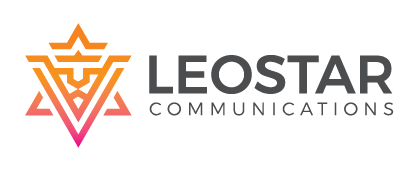10 Types of Social Media Content Strategy That Will Skyrocket Your Engagement
In the bustling world of social media, where trends shift faster than a hummingbird’s wings, social media is great for your golden ticket to capturing attention and engaging your audience. But just like a chameleon wouldn’t survive on leaves alone, sticking to one type of content limits your reach and engagement. This blog dives deep into the different types of social media content you can use to transform your social presence, turning you from a monotonous herbivore into a content-creating king (or queen)!
Why Variety in Social Media Content Types Matters:
Imagine being served the same bland meal every day. That’s what your social media users feels when they see nothing but text posts on their feed. They crave visual feasts, interactive games, and behind-the-scenes peeks. Different types of content cater to varied preferences and social platform algorithms, ensuring your message resonates across the digital landscape.
10 Best Types of Social Media Content to Consider:
The every social media landscape demands effective social media content. But simply posting on social media of any type of content won’t cut it. A holistic view of your social media is to tailor your social media strategy that resonate with your audience and establish a strong social media presence. This means diversifying your quality content zoo with a variety of engaging content across different social media platforms. Here are 10 captivating social media content categories to add to your content mix:
1. Informative Content:
- Educate and engage your audience on social media with blog snippets and articles sharing your expertise. Offer valuable insights into long-form content and keep them informed about industry news and updates.
- Educational infographics and charts provide easily digestible information in a visually appealing format. Perfect for platforms like Facebook and LinkedIn.
2. Visual Content:
- High-quality images and photographs capture attention and tell a story without words. Showcase your products, team, or company culture on Instagram and Pinterest.
- Eye-catching video content and short films are dynamic and engaging, especially on platforms like YouTube and TikTok. Share product demos, tutorials, or behind-the-scenes glimpses.
- Live Q&A sessions and product demos offer real-time interaction and build connections with your audience. Utilize platforms like Twitter and Instagram Live.
3. Interactive Content:
- Polls and quizzes spark audience participation and gather valuable insights about their preferences. Use all-in-one social media features like Facebook Polls and Instagram Stories Quizzes.
- Contests and giveaways incentivize engagement and attract new followers. Offer exciting prizes relevant to your target audience.
- Live streams and AMAs (Ask Me Anything) foster real-time interaction and build a sense of community. Host engaging sessions on platforms like Twitch and Reddit.
4. User-Generated Content:
- Customer testimonials and reviews build trust and social proof. Use content to share positive feedback on your social media accounts or social profiles and website.
- User-created photos and videos showcase your brand through the eyes of your audience. Encourage content creation with branded hashtags and contests.
- Brand mentions and hashtag challenges leverage the power of your community. Encourage user-generated content around your brand and popular topics.
5. Storytelling Content:
- Behind-the-scenes glimpses offer a peek into your brand’s personality and culture. Connect with your audience on an emotional level on platforms like Instagram Stories and Snapchat.
- Employee spotlights highlight your team members and their contributions. This humanizes your brand and showcases your company culture.
- Inspirational and motivational stories related to your brand values resonate with your audience and build brand loyalty. Share their content on social media like Facebook and LinkedIn.
6. Entertaining Content:
- Funny memes and GIFs relevant to your audience add a touch of lightheartedness to your feed. Share content on platforms like Twitter and Facebook.
- Lighthearted anecdotes and relatable content make your brand more approachable and human. Share funny stories or experiences that your audience can connect with.
- User-generated humor (with permission) shows that you can laugh at yourself and encourages further engagement. Share user-created memes and jokes with proper attribution.
7. Promotional Content:
- Product launches and special offers can be announced with eye-catching visuals and educational content. Highlight product benefits and incentivize purchases.
- Discounts and promotional codes encourage engagement and drive sales. Share limited-time offers on platforms like Twitter and Instagram.
8. Educational Content:
- Tutorials and how-to guides offer valuable information and establish your brand as an expert. Share these content on platforms like YouTube and LinkedIn.
- Webinars and educational workshops provide in-depth learning opportunities and attract a qualified audience. Promote your webinars on social media and your website.
- Expert interviews and industry insights position you as a thought leader and attract a wider audience. Share insightful interviews on platforms like LinkedIn and Twitter.
9. Community-Building Content:
- Industry discussions and thought leadership pieces spark conversations and establish your expertise. Share valuable insights on platforms like LinkedIn and industry-specific forums.
- Q&A sessions with influencers and experts offer valuable insights and attract new followers. Partner with relevant influencers for collaborative content.
- Collaborations with other brands or organizations expand your reach and attract new audiences. Partner with brands that share your target audience or values.
10. Event-Related Content:
- Live coverage of industry events or conferences keeps your audience engaged and informed. Share live updates and behind-the-scenes glimpses on platforms like Twitter and Instagram Stories.
- Exclusive behind-the-scenes glimpses of events offer a unique perspective and create a sense of FOMO. Share backstage content and interviews with attendees.
- User-generated content from event attendees encourages participation and builds community. Share photos and videos captured by your audience using branded hashtags.
Remember, the best social media content resonates with your audience. Use this guide as a springboard to explore different types of social media content, track your performance with social media analytics tools, and experiment to find what works best for your brand.
Creating a Social Media Content Strategy
In the ever-churning social media landscape, where trends dance like fireflies and attention spans flit like butterflies, engaging social content is your golden ticket to captivating your audience and building a thriving online presence. But before you dive headfirst into the creation pool, remember: strategy is king (or queen)!
Knowing Your Audience: The Foundation of Social Content Success
Imagine trying to bake a cake without knowing who’s eating it. That’s what creating social content without understanding your audience is like. Before you start planning your social media posts, take a deep dive into your target audience:
- Who are they? Demographics, interests, online habits.
- Where are they? Preferred social media channels (think Facebook, Instagram, TikTok, etc.).
- What kind of content do they engage with? Popular social media content in different formats (videos, images, articles, etc.).
- What are their pain points and aspirations? How can your brand address their needs and desires?
By understanding your audience’s preferences and online behavior, you can tailor your social media content plan to resonate deeply.
Choosing the Right Weapons: Content Types for Different Goals
Creating social media content should not be equal. The types of content you create should align with your specific goals and the platform you’re using. Here’s a quick breakdown:
- Brand Awareness: Eye-catching visuals, short videos, and engaging live content on platforms like Instagram and TikTok.
- Lead Generation: Informative blog content, educational infographics, and gated content on platforms like LinkedIn and Twitter.
- Community Building: Interactive polls, quizzes, and AMAs on platforms like Facebook and Reddit.
- Customer Engagement: Humorous memes, user-friendly content, and behind-the-scenes glimpses on platforms like Instagram and Snapchat.
Remember, the key is to experiment and see what resonates best with your audience on each platform.
Taming the Content Beast: The Power of a Content Calendar
Staying consistent and organized is crucial for creating great social media content. A social media content calendar can help to success :
- Use Content Calendar to Plan and schedule social media posts ahead of time, ensuring a steady flow of content.
- Organize your content by platform, theme, and goal.
- Track your performance and analyze what’s working and what’s not.
Tools like Hootsuite, Buffer, and Sprout Social can help you manage your content calendar and streamline your workflow.
Repurposing & Optimizing: Making the Most of Your Existing Content
Creating high-quality content takes time and effort. But who says you can’t use it twice? Repurposing and optimizing existing content for different platforms is a smart way to:
- Maximize your reach and engagement across different channels.
- Save resources and time on social media by not starting from scratch every time.
- Adapt your content to fit the specific format and audience of each platform.
For example, turn a blog post into an infographic for Pinterest or an Instagram Story. Or, repurpose a video clip into a short snippet for TikTok.
Tools & Resources: Your Content Creation Arsenal
The good news is you don’t have to be a content creation superhero to create great social media content. Several social media tools and resources can help you along the way to create content ideas:
- Content Curation Tools: Buzzsumo and Feedly help you find trending content relevant to your niche.
- Design Tools: Canva and Adobe Spark allow you to create beautiful visuals and graphics, even with limited design skills.
- Video Editing Tools: InVideo and Lumen5 make it easy to create engaging videos without complex software.
- Social Media Management Platforms: Hootsuite, Buffer, and Sprout Social offer a suite of tools for managing your content, scheduling posts, and analyzing results.
Remember, the best social media content is content that resonates with your audience. Use this guide as your starting point, explore different content formats, track your performance, and don’t be afraid to experiment. With a solid strategy, the right tools, and a dash of creativity, you can build a thriving social media presence that engages your audience and achieves your goals.
Conclusion
In conclusion, diversifying your social media content is crucial for maximizing your online presence. By incorporating various types of content such as informative posts, visuals, user-generated content, and promotions, you can engage your audience in unique ways.
Remember to understand your audience and tailor your content to their preferences. Develop a well-thought-out content strategy, experiment with different formats, and track the performance of your posts. Consistency and authenticity are key in maintaining a strong brand identity.
To enhance your content creation journey, explore industry blogs, follow thought leaders, and stay updated on platform features. Engage with your audience, respond promptly, and build relationships.
Share your experiences and questions in the comments below. Social media is ever-evolving, so stay agile, adapt, and continue learning. Create captivating content that connects and inspires, and watch your online presence soar.






